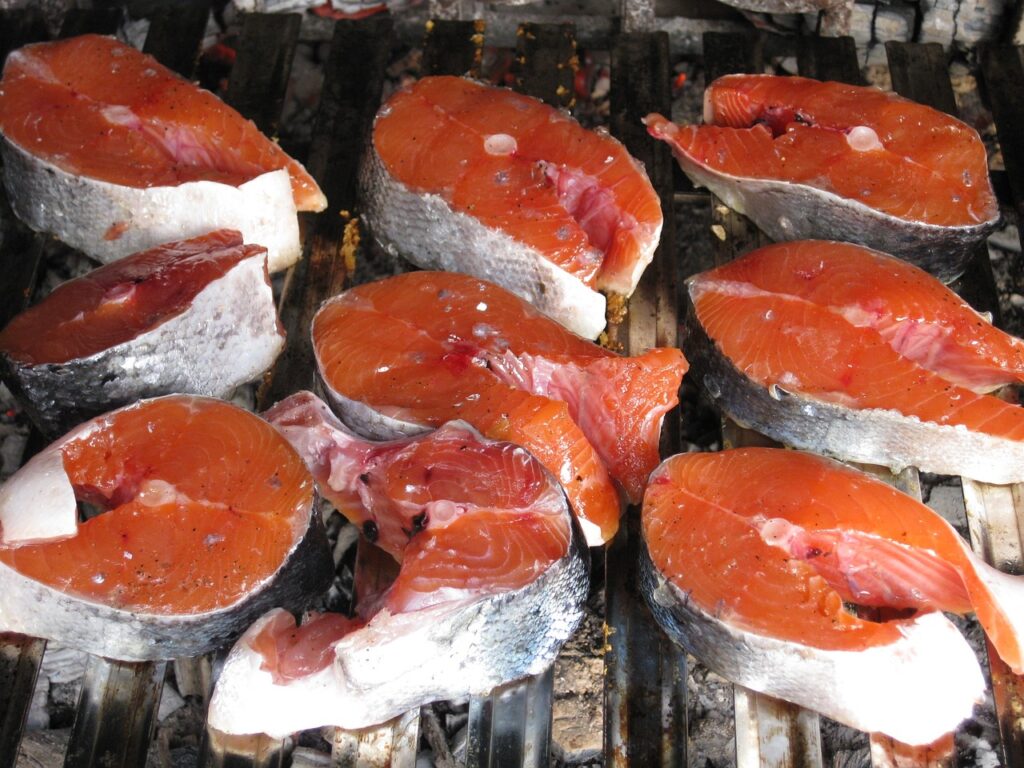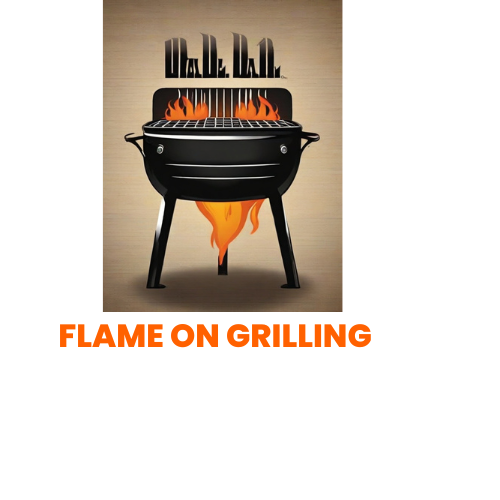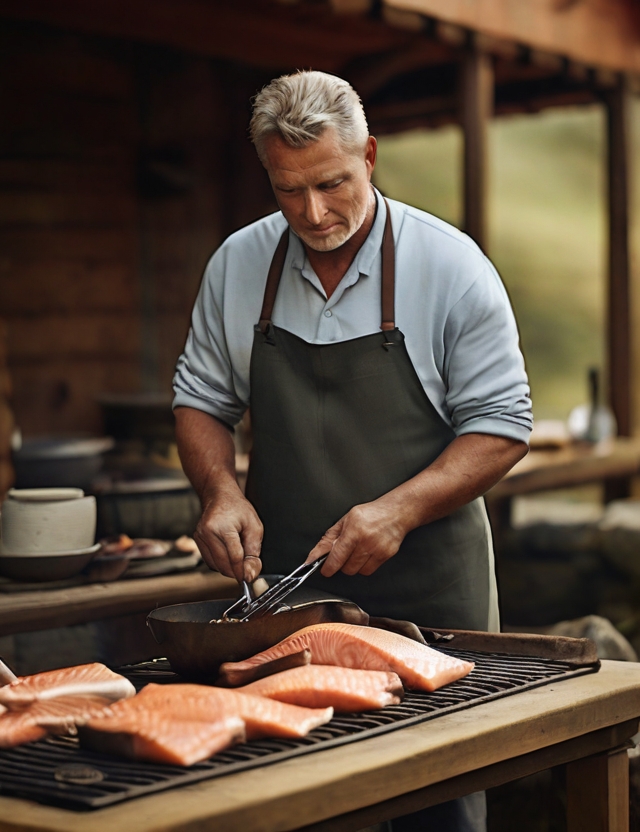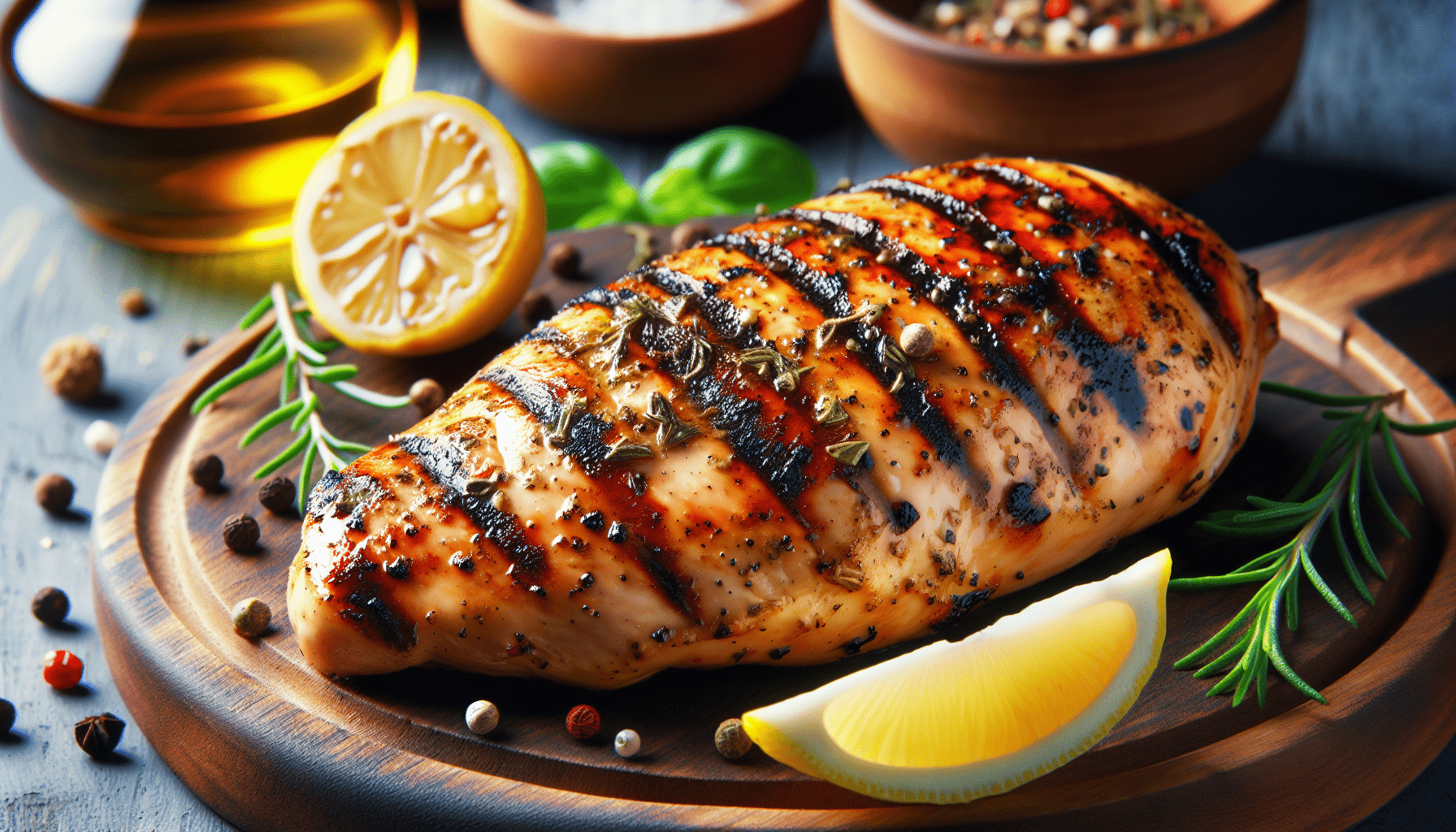Imagine the tantalizing aroma of grilled salmon filling the air as the sizzle of the fish hitting the hot grill sends your taste buds into a frenzy. The question on everyone’s mind is how long does it take to grill salmon to perfection? In this article, we will uncover the timing tips and techniques that will ensure your grilled salmon is cooked to succulent perfection every time. So grab your apron and let’s get grilling!
Choosing the Right Salmon
When it comes to grilling salmon, choosing the right fish is essential to achieving optimal flavor and texture. Freshness is of utmost importance, as it significantly impacts the taste of your grilled salmon. Look for vibrant, firm flesh with a pleasant aroma, and ensure that the eyes of the fish are clear and bright. If buying whole salmon, examine the gills – they should be pink, not dull or grayish.
There are various types of salmon to choose from, each offering its own unique qualities. Chinook, also known as king salmon, is rich, buttery, and highly sought after. Sockeye salmon has a deep, robust flavor and a vibrant red flesh, while coho salmon features a milder taste and a vibrant orange-pink hue. Atlantic salmon, though not as fatty as its Pacific counterparts, remains a popular choice due to its mild flavor and versatility.
Considering sustainability when choosing salmon is vital for the environment. Look for certifications from organizations such as the Marine Stewardship Council (MSC) and the Aquaculture Stewardship Council (ASC) to ensure that the salmon you buy has been responsibly sourced. Opting for wild-caught salmon when available is another eco-friendly choice, as these fish are often abundant in their natural habitats.
Preparing the Salmon
Before you start grilling, it’s important to properly prepare your salmon to enhance its flavors and ensure even cooking. If using frozen salmon, thaw it thoroughly before grilling. The recommended method for thawing frozen salmon is to place it in the refrigerator overnight. This gradual thawing process avoids compromising the texture and taste of the fish.
Deciding whether to grill your salmon with the skin on or skinless is a matter of personal preference. Keeping the skin on can help hold the fish together while grilling and offers a crispy texture. However, if you prefer a skinless fillet, simply remove it before grilling.
Seasoning your salmon with the right flavors is crucial to enhancing its natural taste. Consider marinating the fish in a mixture of olive oil, lemon juice, garlic, and herbs for at least 30 minutes before grilling. This imparts a delightful tangy and herbaceous flavor to the salmon. Alternatively, you can opt for a dry rub or a simple sprinkle of salt and pepper to let the natural flavors shine through.

Preheating the Grill
It’s important to preheat your grill for optimum grilling conditions. Depending on the type of grill you have, preheating times may vary. Whether you’re using a gas grill, charcoal grill, or electric grill, ensure it is clean and ready for cooking.
When choosing a grill, consider the advantages of gas and charcoal options. Gas grills offer convenience and precise temperature control, allowing you to adjust the heat as needed. On the other hand, charcoal grills give a distinct smoky flavor to the salmon, imparting that beloved outdoor grilling taste.
The preheating time for your grill will depend on its type and size. Gas grills generally take about 10-15 minutes to preheat, while charcoal grills may require approximately 20-30 minutes to reach the desired temperature. Aim for a preheating temperature of around 400°F to ensure proper and efficient cooking of the salmon.
Direct or Indirect Heat?
Choosing the right grilling method for your salmon is crucial to achieving the perfect results. There are two main approaches: direct heat and indirect heat.
Direct Heat Method
The direct heat method involves placing the salmon directly over the heat source on the grill. This method is ideal for grilling salmon fillets or steaks that are at least 1 inch thick. The direct heat sears the exterior quickly, resulting in a beautiful crust while retaining moisture within the fish. It’s recommended to oil the grates before placing the salmon to prevent sticking.
Indirect Heat Method
The indirect heat method involves setting up a two-zone fire on the grill, with one side producing direct heat and the other side remaining cooler with indirect heat. This method is ideal for grilling whole salmon or larger fillets. By cooking the salmon using indirect heat, you can achieve a more even and gradual cooking process, resulting in tender and succulent fish.

Grilling Techniques for Perfect Salmon
To ensure your salmon doesn’t stick to the grill grates, it’s important to oil them before placing the fish. Use a brush or a folded paper towel dipped in oil to lightly coat the grates. This prevents the salmon from sticking and allows for easy flipping and removal.
Using foil or cedar planks is another popular method for grilling salmon. If using foil, create a packet by placing the salmon in the center, seasoning it, and folding the edges to create a sealed pouch. This method helps retain moisture and adds a subtle steaming effect. Cedar planks, soaked in water prior to grilling, impart a delightful smoky aroma to the salmon while creating a natural barrier between the fish and the heat source.
Grilling salmon with or without aluminum foil is a matter of personal preference. While using foil helps protect the salmon from direct heat and minimizes the risk of flare-ups, grilling without foil allows for direct contact with the grill grates for a more pronounced grilled flavor.
Grilling Time Based on Thickness
The grilling time for salmon varies depending on its thickness. Determining the thickness of your salmon fillet or steak is essential to achieving perfectly cooked fish.
To measure the thickness accurately, place the salmon on a flat surface and use a ruler or a tape measure to measure the highest point of the fillet or steak. This measurement will guide you in determining the appropriate grilling time.
General grilling times for salmon are as follows:
- 1/2 inch thickness: 2-3 minutes per side
- 1 inch thickness: 4-6 minutes per side
- 1 1/2 inch thickness: 6-8 minutes per side
- 2 inches or thicker: 8-10 minutes per side

Checking Doneness
To ensure your salmon is perfectly cooked, there are various methods to check for doneness.
Internal Temperature
Using a meat thermometer, insert it into the thickest part of the salmon to measure the internal temperature. The recommended temperature for fully cooked salmon is 145°F. Once it reaches this temperature, the fish will be moist, tender, and safe to eat.
Flake Test
Another method to check if the salmon is done is to gently insert a fork or a knife into the thickest part of the fillet and twist it slightly. If the salmon flakes easily and the flesh is opaque, it’s an indication that it’s cooked through.
Color and Texture
The color of cooked salmon should transition from translucent to opaque, while the flesh should be firm and slightly springy to the touch. Overcooked salmon will appear dry and flaky, while undercooked salmon may still have some translucency in the center.
Avoid Overcooking Salmon
To ensure your grilled salmon is not overcooked, proper timing is key.
Importance of Proper Timing: Aim to remove the salmon from the grill just before it reaches the desired internal temperature. The residual heat will continue cooking the salmon slightly, allowing it to reach the perfect level of doneness without drying out.
Monitoring Temperature: Keep a close eye on the salmon’s internal temperature during grilling. Remember that the temperature can rise rapidly once it reaches a certain point, so it’s crucial to be vigilant to avoid overcooking.
Resting Period: Allow your grilled salmon to rest for a few minutes before serving. Resting allows the juices to redistribute and the fish to firm up slightly, resulting in a more flavorful and succulent bite.
Accompaniments and Serving Suggestions
Enhance your grilled salmon experience with a variety of accompaniments and serving suggestions.
Marinades and Glazes: Experiment with different marinades and glazes to add an extra layer of flavor to your grilled salmon. Consider options like honey mustard, teriyaki, dill and lemon, or maple glaze.
Side Dish Pairings: Complement your grilled salmon with a range of side dishes. Fresh salads, roasted vegetables, quinoa pilaf, or citrus-infused couscous all make excellent choices. Grilled asparagus or zucchini can also be delicious accompaniments that can be cooked alongside the salmon on the grill.
Garnishing and Presentation: Elevate the visual appeal of your grilled salmon by garnishing it with fresh herbs, such as dill or parsley, and a squeeze of lemon juice. Serve it alongside wedges of lemon or lime for an added zest. To impress your guests, consider arranging the salmon fillets on a serving platter with some colorful edible flowers or microgreens.
Safety Tips for Grilling Salmon
While grilling salmon is a delicious and enjoyable experience, it’s important to prioritize safety measures to prevent any foodborne illnesses.
Handling and Storage: Always handle raw salmon with clean hands and use separate cutting boards and utensils to avoid cross-contamination. Store raw salmon in the refrigerator at or below 40°F and ensure it is properly sealed to prevent contact with other foods.
Safe Cooking Temperatures: Cook salmon to an internal temperature of 145°F to ensure it is safe to eat. This temperature kills any harmful bacteria that may be present.
Avoiding Cross-contamination: Clean and sanitize your grill grates before and after grilling salmon. Avoid placing the cooked salmon back on the same plate it was initially on when raw to prevent cross-contamination.
By following these safety tips, you can enjoy a delicious and safe grilled salmon experience time and time again.
In conclusion, grilling salmon to perfection requires attention to detail and specific techniques. Choosing the right salmon, preparing it properly, and employing the appropriate grilling methods are all essential steps. Remember to consider freshness, sustainability, and your personal preferences when selecting salmon. Take the time to thaw frozen salmon, decide on the skin-on or skinless approach, and utilize seasoning options to enhance flavors. Preheating your grill properly, determining direct or indirect heat, and using grilling techniques such as oiling the grill grates or using foil or cedar planks ensure successful grilling. Finally, checking for doneness, avoiding overcooking, and serving salmon with complementary accompaniments will elevate your grilling experience. Whether you’re a seasoned griller or a beginner, following these tips and techniques will help you achieve the perfect grilled salmon every time. Happy grilling!




